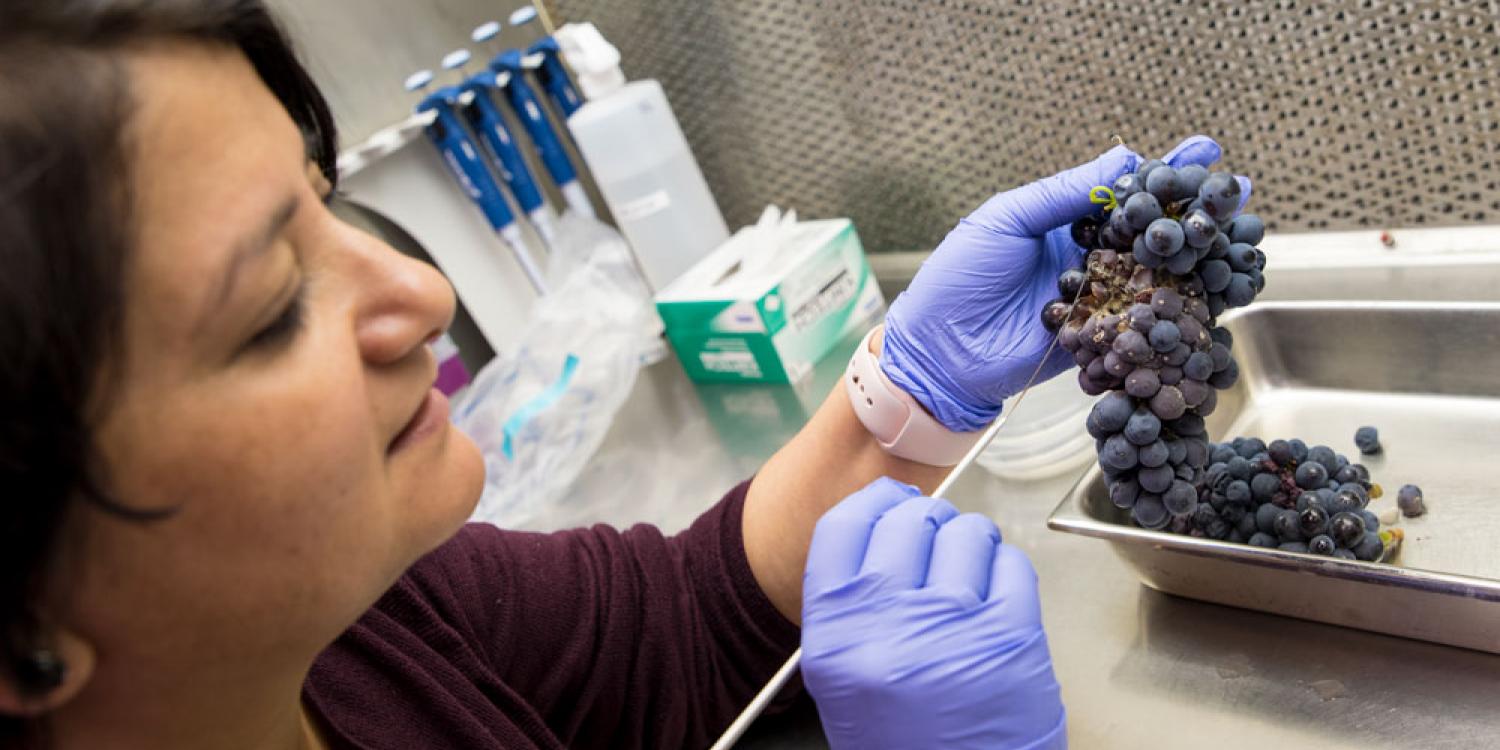
Oregon's $271 million wine industry is based on producing premium-quality wines, not mass quantities. If wineries want to compete with premium regions around the world, they know that research is necessary to keep them on the cutting edge.
They're getting help from scientists at Oregon State University's Oregon Wine Research Institute (OWRI). Individual and group OWRI research projects include:
- A team has been conducting research and outreach to address the effects of grapevine red blotch disease on vineyards in Oregon since 2016. The disease has potential to impact berry ripening and decrease wine quality, creating a significant concern for Oregon’s premium wine producers. Vaughn Walton, a professor and entomologist in the OSU Department of Horticulture, is working on identifying insects that can vector the virus. Achala KC and Alexander Levin, assistant professors and OSU Extension specialists at OSU’s Southern Oregon Research and Extension Center (SOREC) in Jackson County, have been working on the disease since 2016.
- The economic impacts of determining how to manage, mitigate, and potentially prevent smoke impacts on grapes and wines are significant and affect processes throughout the wine production cycle. With funding from the American Vineyard Foundation and the Northwest Center for Small Fruits Research, OSU launched a smoke exposure research team led by Elizabeth Tomasino, associate professor of enology.
- Patty Skinkis, Extension viticulture specialist and 2020-2021 president of the American Society for Enology and Viticulture, develops and delivers research information and educational outreach materials for the commercial winegrape industry in Oregon. As part of her viticulture program at OSU, she conducts applied research that impacts the commercial winegrape industry and contributes to the broader knowledge of grapevine physiology and vineyard sustainability.
- James Osborne, associate professor and Extension enologist, studies how various microorganisms present during winemaking impact wine quality, specifically aromas. He also studies factors impacting the growth of these spoilage microorganisms and develops strategies to help wine makers prevent wine spoilage.
Past achievements of OSU scientists include isolating the first malolactic bacteria to grow at cold temperatures and low pHs; devising a lag growth phase crop estimation system that is now used universally; importing the Dijon clones and many varieties for the first time into the United States; and creating the first International Cool Climate Symposium for Viticulture and Enology in 1984.
Wine grapes ranked No. 7 on the state's list of most valuable agricultural commodities in 2020.